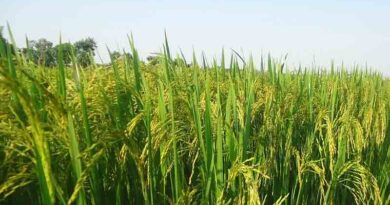First hit on grass weeds
15 February 2022, UK: Grass weeds should be the top priority for farmers’ herbicide strategies this spring. High levels of germination over the winter, along with strong early growth, has resulted in more well-established wild oats and ryegrass this season.
Holding off grass weed control will result in more competition on crop yields and could prove more difficult to control – requiring higher herbicide rates and a greater challenge for application, according to Syngenta grass weed specialist, Georgina Young.
“Growers and agronomists should be planning herbicide programmes now to target the grass weeds first,” she advised.
Making an Axial Pro application first in a herbicide sequence can then be followed with a sulfonylurea (SU), ALS inhibitor or hormone herbicide after just a seven day interval.
If the SU/ALS inhibitor/hormone herbicide is used first, however, growers must wait 21 days before an application of Axial Pro.
“While some growers may opt for the later spring application to allow more grass weeds to emerge, any established wild oats or ryegrass could have become significantly larger and more difficult to control at the later timing,” she warned.
Furthermore, earlier applications make it easier to target grass weeds, before the crop becomes larger and shades seedlings. Syngenta application research advocates using an angled nozzle to better hit and cover grass weeds when the crop is more open, then switching to vertical nozzles, for better penetration through the canopy down to the weeds, with later applications.
Overwintered wild oats at the earlier growth stages (less than GS29) may be controlled with Axial Pro at rates as low as 0.6 l/ha when applied in good growing conditions. For larger plants, above GS29, the rate must be increased to 0.82 l/ha.
Spring germinating grass weeds can be effectively controlled with Axial Pro, at rates as low as 0.4 l/ha, when applied with Adigor. However, if there are larger weeds present, or mixed populations with overwintered weeds, higher application rates would be required.
Mrs Young also pointed out that scheduling grass weed control first in the programme ensures it can be applied when the weeds are actively growing – ensuring optimum uptake and control.
If treatments must be applied when conditions are sub-optimal, often when it’s cool and dry in later spring, the rate of Axial Pro should be increased to maximise control, she advised.
Trials have shown grass weed control may be compromised where Axial Pro is tank mixed with ALS inhibitor herbicides; if that is the only option, Axial Pro should be used at its maximum rate for the target weed. In sub-optimal growing conditions, the tank mix should be avoided completely.
Where control of serious wild oat or ryegrass populations is the primary weed challenge, growers and agronomists are increasingly viewing a solo application of Axial Pro at the absolute optimum rate and timing as the best option.

Experience over recent seasons suggests later germinating grass weeds have been less of a concern, particularly with cool dry weather in March and April. “That has further reinforced the focus on early grass weed removal,” advised Mrs Young.
Each field’s weed burden would need to be individually assessed, she suggested. “Broad-leaved weeds are typically easier to control later in the season, without the same fears of crop competition and weed multiplication associated with grass weeds.”















